Patio design mistakes: 9 errors to avoid when planning your space
Our garden experts give their advice on patio design mistakes so you can make sure you don't make the same errors in your own outdoor space

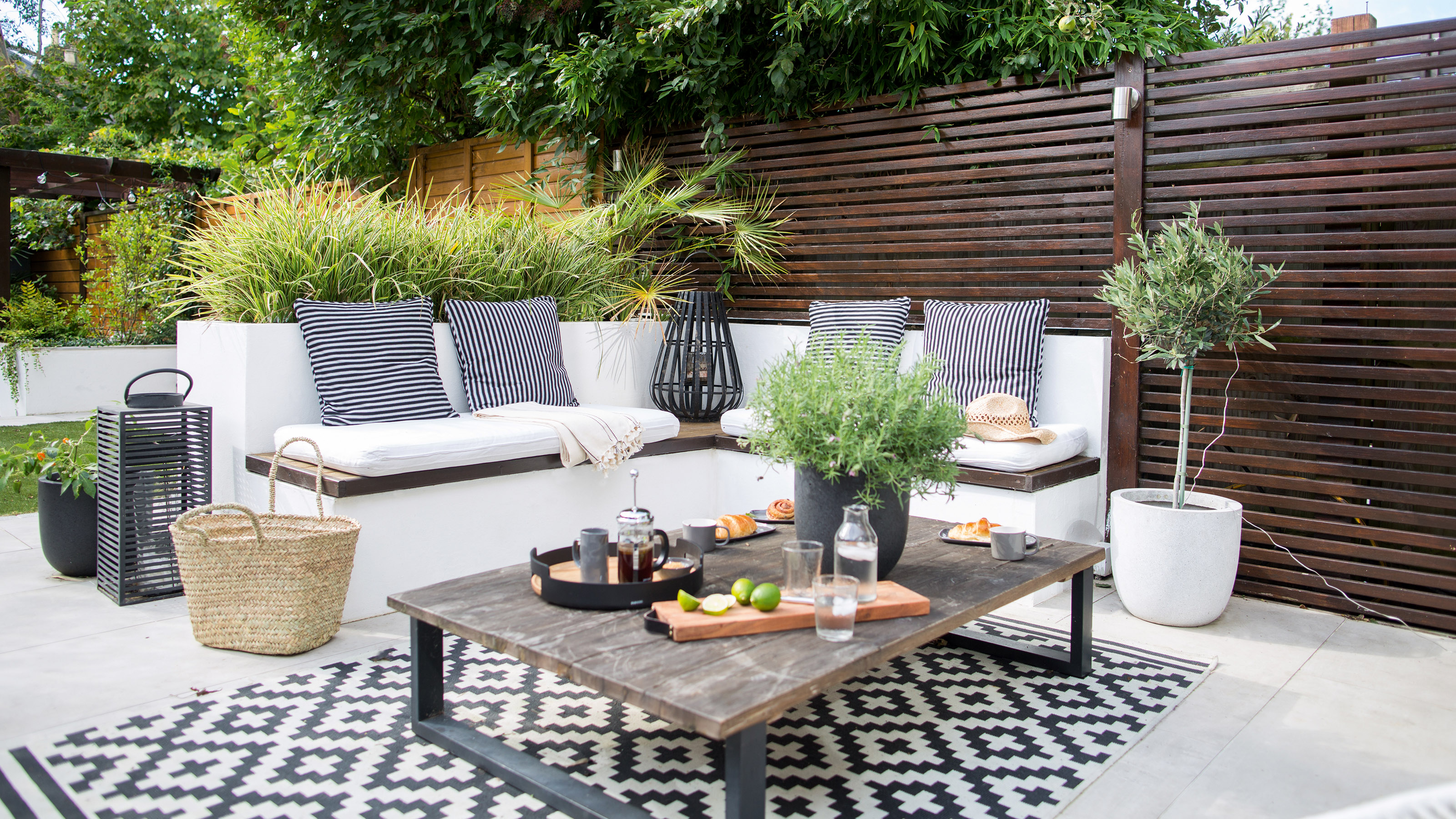
It's always a good idea to be up to speed with common patio design mistakes so you can ensure you don't create problems for yourself when designing a new paved space in your backyard.
When you're putting in a new patio, it's crucial for timing and costs that you get it right first time. Hard landscaping areas are often the most expensive part of a garden scheme and designing a patio is something of a minefield, with lots of conflicting information and a plethora of materials to choose from.
Always make sure you use a registered landscaper who’s associated with a reputable trade body, or if you’re self-building then do as much research as possible before you start, making sure you consider things like where the water will run off, the levels and how the scale of the patio fits with your wider garden.
Whichever route you’re taking, we’ve gone straight to the experts to find out what pitfalls to avoid when designing a new patio. From drainage issues to paving types, planting to proportion, and everything in between, we’ve enlisted the help of stone suppliers, landscape contractors and award-winning garden designers to help you on your way to getting the perfect patio ideas in place for your outdoor space.
The top 9 patio design mistakes that can prove costly
From choosing the best location for your patio to selecting the right patio paving, there are so many decisions you'll need to make when planning your space that it can be easy to make an error of judgement.
By making sure you avoid the following patio design mistakes, you'll be on your way to designing your perfect outdoor living space.
1. Not working drainage into your design
Not the most glamorous of points, but one of the most important patio design mistakes to be avoided is not thinking about drainage. 'The most important thing to consider when designing a new patio or terrace is incorporating drainage,' says Alex Stevenson, Director at Clockhouse Landscaping. 'Where is the rainwater going to run off the patio flooring to? A border, lawn or into a drainage channel?
'It is preferable that the rainwater falls away from any permanent structures or a house. Set out the new patio or terrace using string lines where possible as a guide to show where the patio edging will be.'
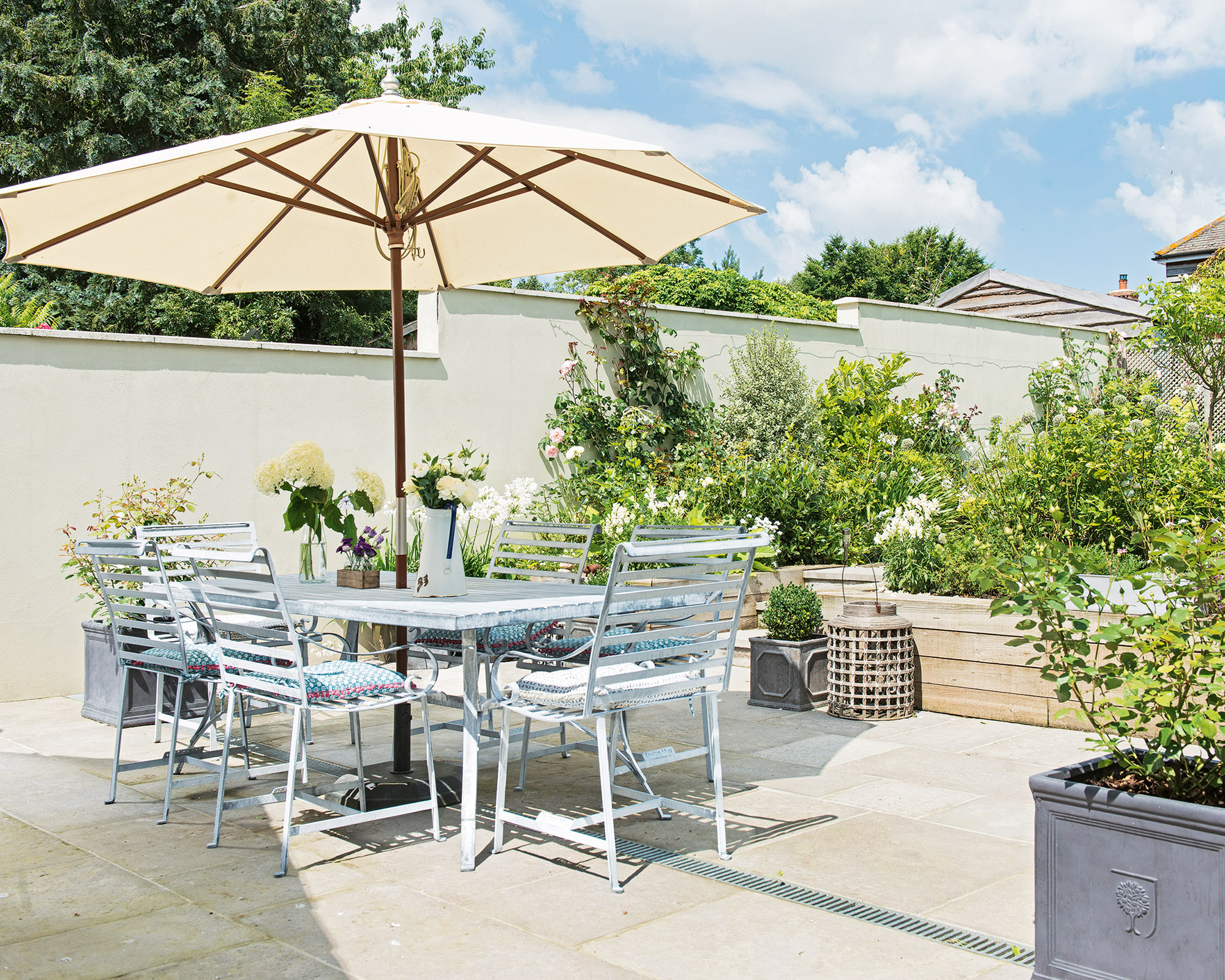
2. Choosing the wrong paving material
It is crucial when selecting patio materials to think about using the right type for the right place. Chris Durnford, Customer Experience Director at London Stone advises: 'Porous, light stone like a sawn sandstone will absorb more moisture (and therefore dirt) than a darker, more robust material such as a riven limestone or slate.'
'If your garden is north-facing [in the northern hemisphere] and is littered with fruit trees, do not lay a light-colored, porous material – you’ll regret it! Ask yourself how much maintenance you’re prepared to carry out before you lay a patio, and choose materials accordingly.'
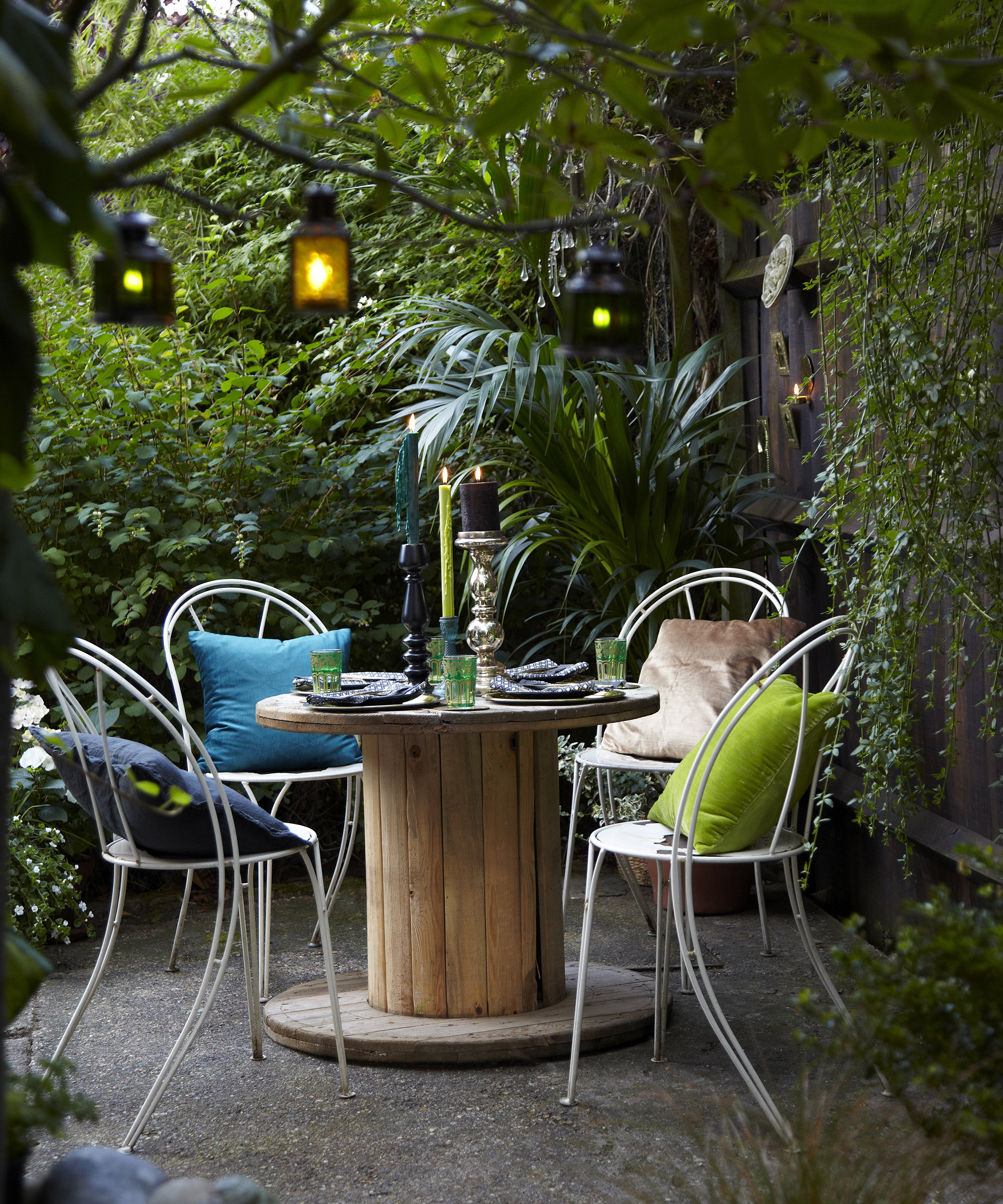
3. Thinking an expensive design means a better design
If you're on the lookout for budget patio ideas, it will be music to your ears to learn that sometimes the cheaper design choice is actually the best one. And this can be the case with certain patio materials according to Chris Durnford. So don't be be tempted to throw money at your design in the hope that it will mean that it will look better as a result, as this can be a costly patio design mistake.
'While you should look for reputable suppliers to buy paving (or any material) from, price is not always the best guide for whether the material is right for your garden,' he says.
'Materials like a sawn limestone go through a lot of manufacturing to saw it, sandblast and brush it, which is costly. While sawn limestone, for example, might be the perfect choice for some, a riven sandstone might be better suited – and happens to be much cheaper – for your project.
'Some natural stones are riven (naturally split) but have a sawn (machine-cut, straight edge) so can be cheaper to produce but still be used in a modern, premium-looking design.'

4. Under-budgeting for your patio design
'If we had a dollar for every customer that says, "We overspent on the house, so our budget is tight", or, "I had no idea how much a patio costs", we'd be extremely well off,' says Chris. 'Put simply, when done correctly, laying materials outdoors is not cheap, and remember that a large backyard means more materials.
'Patios are an investment and should be treated like one. Materials are a small part of the cost – you’ll pay a lot more for an experienced, skilled contractor to lay them. Also remember that there are "unseen" materials that are installed underneath the paving. You’ll never see them, but they’re no less essential – and cost money.'
Falling into classic patio design mistakes like this means you're unlikely to have budgeted for some of the more fun finishing touches like patio lighting and fire pit patio ideas that can help to elevate your overall design too.

5. Failing to factor your house into the design
Garden designer Alexandra Noble likes to let the existing property inform the design of a patio.
'There are myriad material choices for a patio from porcelain tiles to natural stone to decking, but when designing a patio I am mindful of the property’s facade and like to choose materials and color tones which sit harmoniously with the building exterior,' she says.
'Also, the positioning of the patio within your plot is of crucial importance. Consider which areas will enjoy morning, lunchtime or evening sun and place according to preference,' she says.
Neglecting to consider this is a costly patio design mistake as you could be left with a patio that's always in shade at the time you most enjoy eating outdoors, for example.
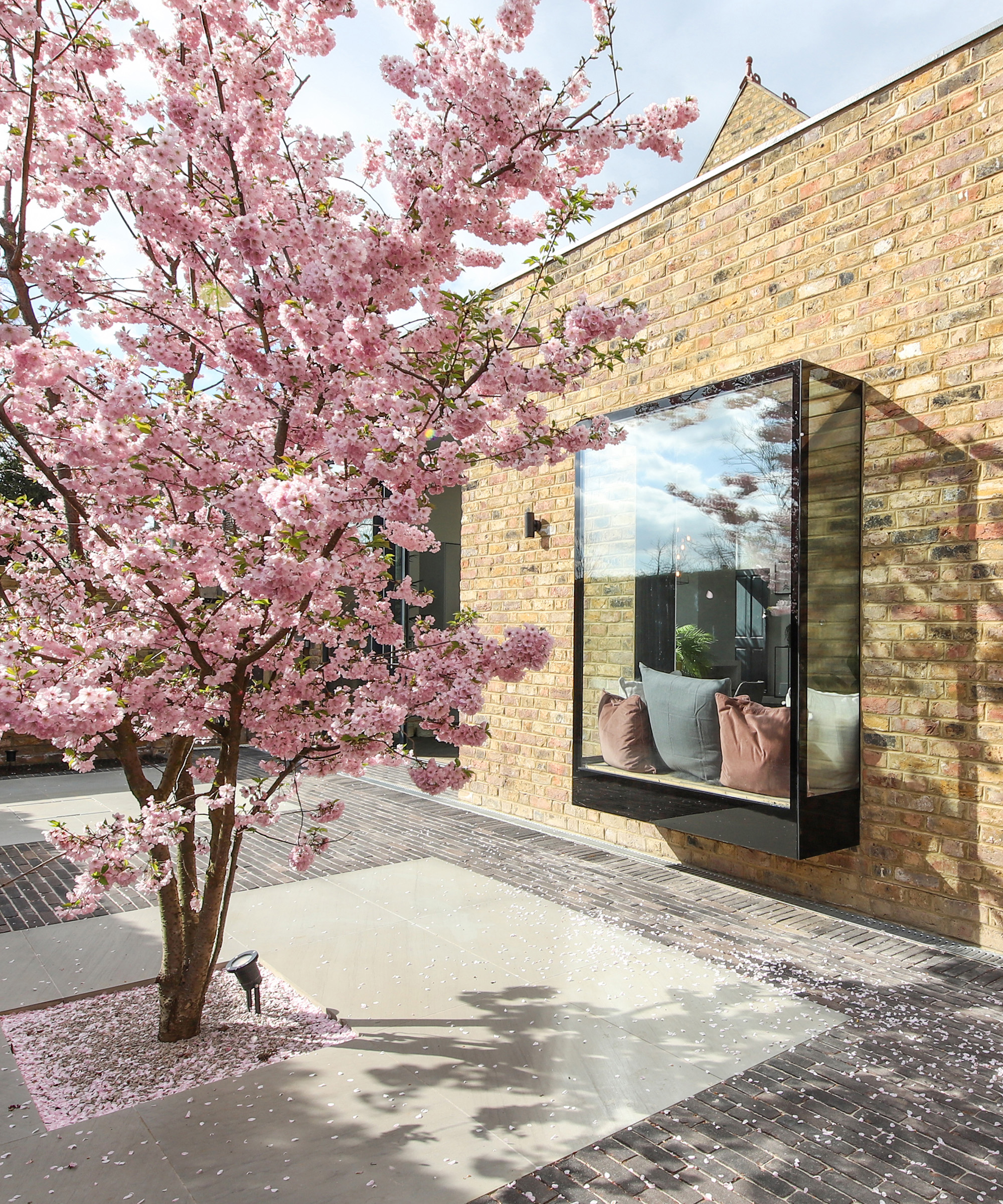
6. Not designing your patio around function
Garden designer Alice Ferguson believes that no patio design should go ahead without first considering the practical needs of the space. 'Before jumping into creating your patio, consider what it be used for,' says Alice.
'Is it for entertaining, or should it contain more intimate cozy patio ideas to escape into and relax. Your choice will influence the character of material you choose for your design, the size of the open space and the amount of planting you bring into the patio.'
'Whilst thinking about the use of the space, keep the patio landscaping in proportion to the plot and how it will respond to other areas,' she advises.

7. Forgetting about patio planting
'Don’t forget about your planting when designing your patio,' urges Alice Ferguson. 'Planting can break up a large expanse of paving, create zones and bring a balance of open space and intimacy.'
'Use planting at ground level to spill onto the terrace and soften the area. Raised garden beds are popular and are often a go-to,' she says. 'They can be great for informal bench perches, however, they sometimes bring in the vertical faces of the garden, shrinking the space and creating more hard faces.
'Raised beds have a place and a use, but explore the option of having patio plants at paving level and using luscious layers and height with the plant choice.'
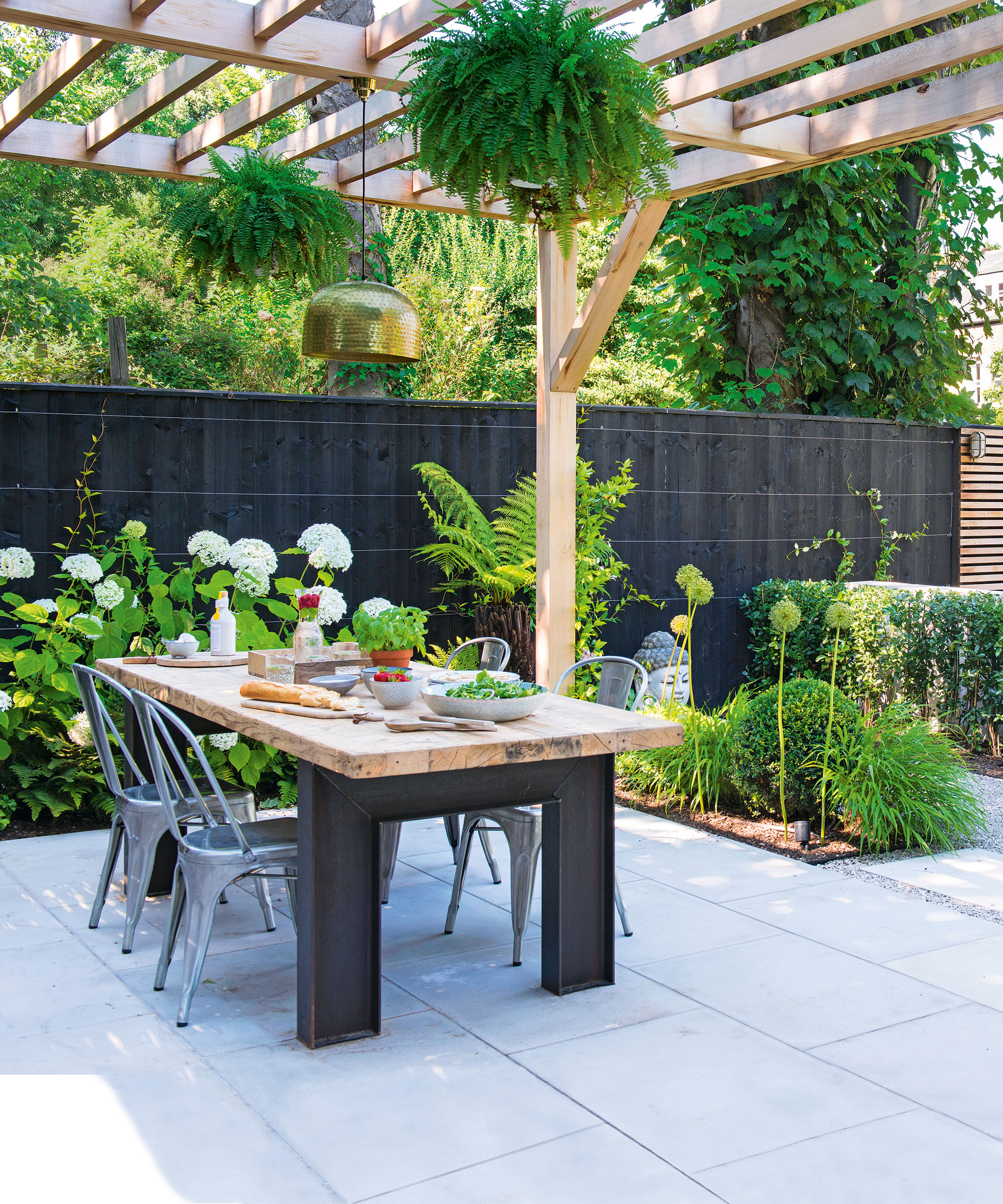
8. Not looking at paving materials when wet as well as dry
Make sure you choose your selection of materials from a complementary palette and look at the materials together when both wet and dry. 'Materials can darken substantially when wet and it's likely that we may be looking out onto our gardens on drizzly days,' says Alice Ferguson.
'Use two or three hardscaping materials at the very most across a patio design,' she says adds. 'Consider the use of the space, footfall and maintenance as well as aesthetic attributes to find the appropriate material for the location and use.'
'Explore interesting details for the moments where materials meet, such as stepping stone strips through gravel patios which lead onto gravel paths.'
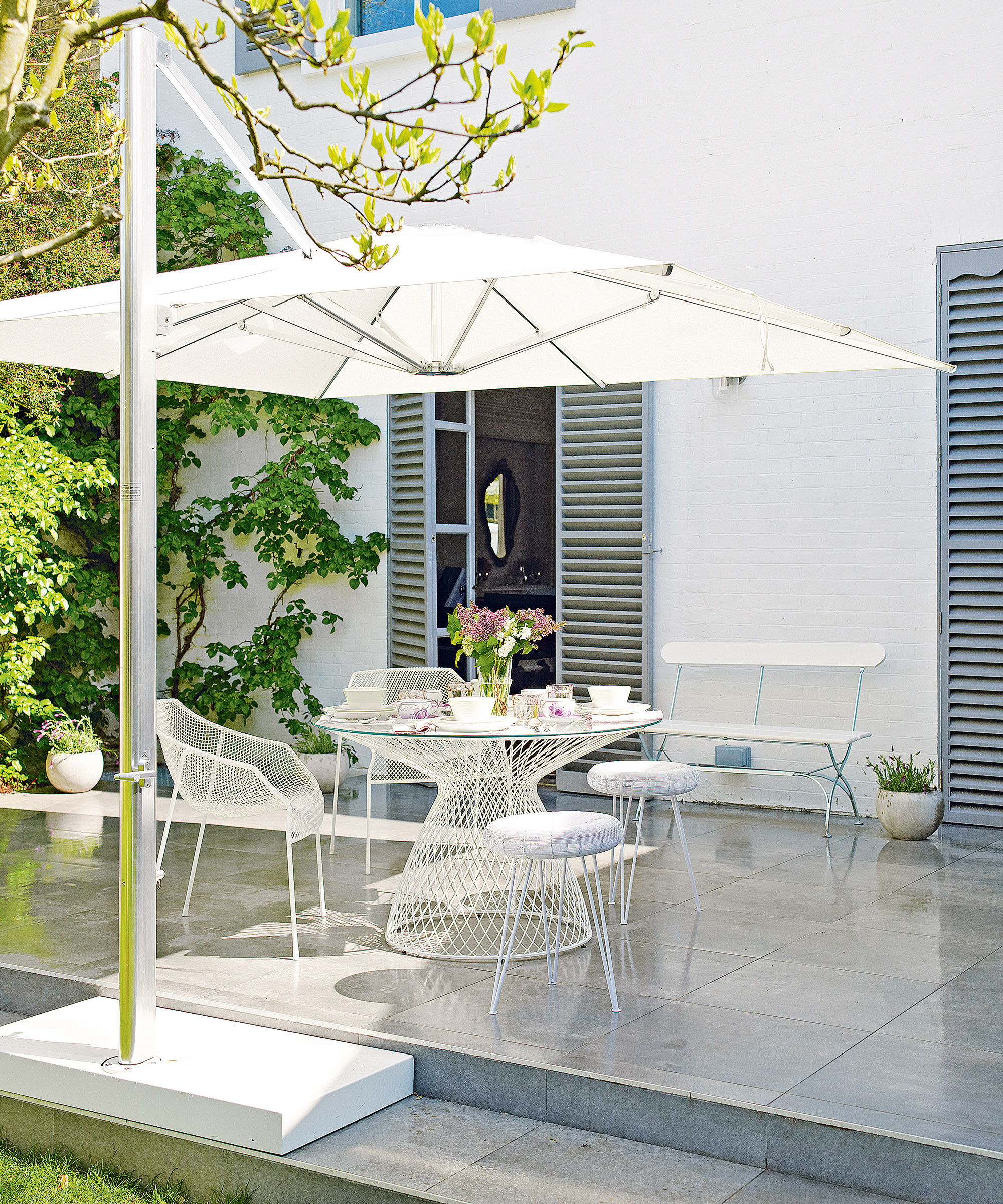
9. Using the wrong sized pavers for your space
The size of the pavers you use will give an impression of more or less space. Small pavers can appear busy and crowd a small patio according to Alice Ferguson, although sometimes you might want to break the rules and use small pavers or cobbles for an intimate atmosphere in a small courtyard garden.
'There are no hard and fast rules, or formulas that must be adhered to,' says Alice. 'It is about understanding the space and setting of your garden and knowing the atmosphere and character you would like to achieve. Starting from there you can explore ideas and materials which suit both you and your garden.'
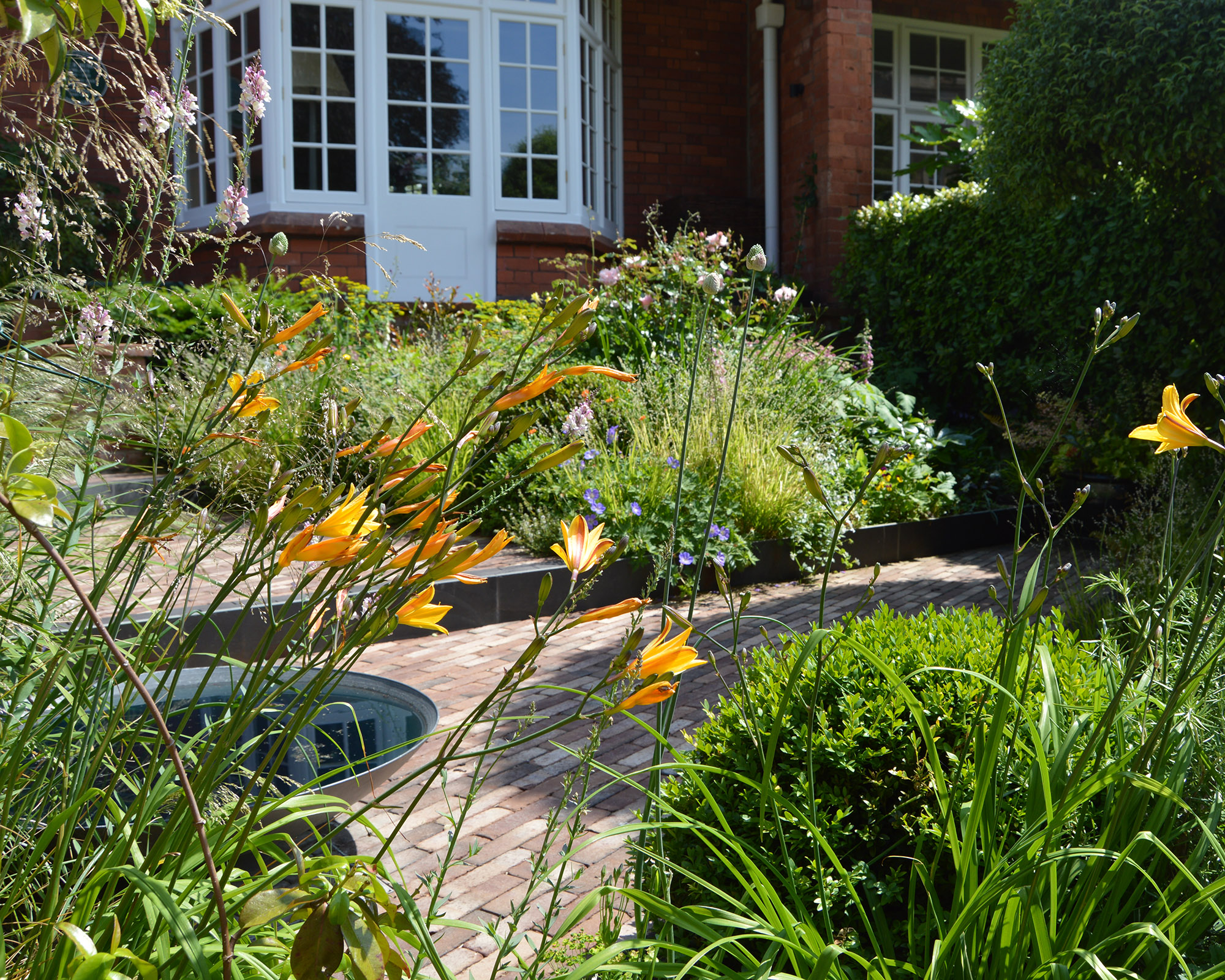

Tabi is the founder of TJG Gardens, a London-based design practice who work across the UK and abroad. With a reputation for textured, vibrant and informal planting schemes and rich, characterful gardens, Tabi enjoys sharing her love for the natural world with her clients. Her favourite projects are those that benefit humans and wildlife alike; in the studio, improving biodiversity and a client’s enjoyment of their outdoor space go hand in hand.
As well as designing big and small gardens in the city and the countryside, Tabi writes about nature, design and gardening for the Financial Times, Country Life, The Telegraph, House and Garden and Ideal Home.
